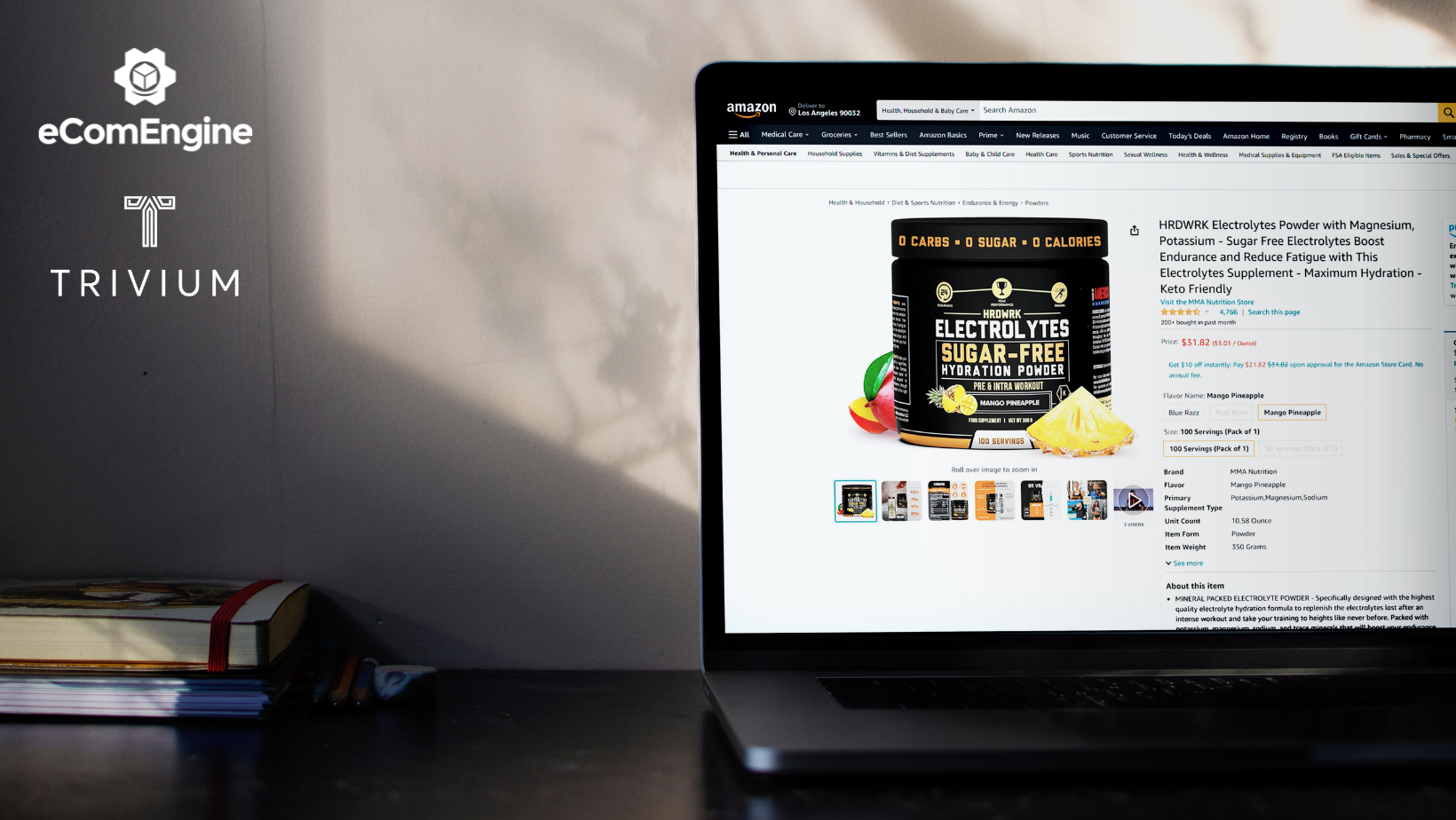The more Amazon listings you have, the harder it is to manage them. Getting high-quality product images, finding the perfect keywords, and getting genuine positive reviews are hard enough. And then, you have to worry about black-hat competitors or a not-quite-perfect AI bot editing your listings incorrectly.
What’s the answer to Amazon listing management? In this post, we’ll explore how to monitor for those unexpected changes and make suggestions for optimizing your listing to increase sales.
Is Your Amazon Store Reaching Its Full Potential?
Discover hidden opportunities, reduce wasted spend, and boost your sales with a free expert audit.
Our team will analyze your listings, ad performance, and overall account health to uncover exactly what’s working—and what’s holding you back. You’ll get a tailored blueprint to scale smarter, not harder.
Get a Free AuditListing Monitoring
Lots of adverse events can harm your Amazon listings. You might lose the Buy Box to a new competitor or to Amazon itself. Your listing might get hijacked by a malicious actor who wants to sabotage your sales. An Amazon bot might mistake your item for an adult product and hide it from standard search results, or detect something in the listing that makes it eligible for complete deactivation.
To avoid these issues, or address them immediately when they do arise, you’ll need to keep a close eye on all your listings, all the time. Since you probably like to shut your eyes occasionally (personally, I like to do that for about eight hours every night), you’ll need some help. Use an Amazon listing monitoring tool to get instant alerts when any changes happen.
Important Amazon listing alerts include Buy Box monitoring, alerting you when any of your listings lose the Buy Box or when the Buy Box gets suppressed completely. Your alerting tool should also tell you when your title or bullet points change, and when any new competing offer appears on the listing. This helps you avoid or address listing hijacking. Plus, you’ll want to get alerts if your listing gets suppressed from search results, deactivated, flagged as an adult product, or even deleted.
Of course, you can turn on and off each alert type to receive what you find most important and actionable. Most sellers find that search suppression, Buy Box loss and suppression, and title and image changes are critical Amazon listing managementl alerts to keep their listings healthy and selling well.
SEO Improvements
Once your listing is all correct, searchable, and Buy Box eligible, it’s time to make sure it gets in front of lots of customers’ eyeballs. Most buyers start their shopping journey by searching for products they like near the top of the search results page. So, here’s where Search Engine Optimization (SEO) comes in.
Amazon’s search algorithm looks at elements like the title and description of your listing to decide how relevant it is to each shopper’s search. Enhance your product’s visibility by optimizing these elements. This might mean testing different titles over time or using a tool to split-test before making a choice. Or, you may employ a consultant or agency that specializes in Amazon listing optimization.
Of course, back-end keywords are a huge part of Amazon SEO. You need to conduct thorough keyword research. You can do this by starting with a simple strategy, like typing the most basic search for your product (e.g “sippy cup”) and then looking at the search bar suggestions Amazon provides. Then, use a good tool to investigate which keywords have the highest search volume. Keep an eye on your ad campaigns too to see which keywords are most likely to actually convert buyers to purchase your product: searches are no good if they don’t end in sales. Once you have done your research, leverage backend keywords to the max for improved search rankings.
Creative Optimization
Once a buyer finds your listing in search results, your listing needs to put its best foot forward and make a great first impression. Amazon listing optimization needs to go beyond what the algorithms like and ensure the listing appeals to regular humans, too. Use high-quality images, compelling product descriptions, and enhanced brand content to catch a buyer’s attention and provide plenty of information they can use to make the right choice of product.
Good creative can be a target for hijackers as well or can get mistakenly “updated” by fellow sellers or Amazon bots. Set up alerts when important components like your main image get changed so you’re aware if anything needs to be corrected or improved.
Product Review Management
Product reviews build trust and credibility with customers. If they like the looks and description of your product, they probably want to hear from other buyers to know whether the product is as great as you say it is.
There are two sides to managing Amazon reviews: addressing negative reviews and increasing positive reviews. Both of these must be done carefully to remain ethical and comply with all of Amazon’s policies (so that your account won’t get deactivated completely).
Encourage positive reviews by selling high-quality products that you would be willing to buy yourself, keeping your listings accurate to the product, providing excellent customer service… and then asking your buyers to leave reviews. Yes, you are allowed to ask for reviews, as long as you do it neutrally and do not offer any incentives in exchange for a review.
The safest way to ask is by using the Request a Review button on the Order Details page in Seller Central. This triggers Amazon to send a message requesting a review. Because Amazon writes the message, it is guaranteed to comply with its Communication Guidelines.
Of course, it becomes too time-consuming to click the button for every order at exactly the right time, so there are tools to help automate this too. Try FeedbackFive by eComEngine to automate asking for reviews on the right SKUs at the right time.
When some negative reviews inevitably come in, you’ll want to know about those right away and do what you can to resolve the situation. While Amazon does not allow sellers to contact reviewers and ask them to edit or remove their reviews, it does allow sellers with Amazon Brand Registry to contact buyers who left negative reviews and offer a refund or replacement. Tools like FeedbackFive can alert you when a buyer leaves a new negative review so that you can respond immediately in Seller Central.
Struggling to Scale on Amazon?
Get a free expert audit and uncover quick wins to boost sales and cut ad waste.
Get a Free AuditEffective and Efficient Amazon Listing Management
Managing Amazon listings can be a lot of work, but the goals–increased sales, improved reputation, and safety from being penalized for violating Amazon policies–are worth it. Luckily, software can help you monitor possible Amazon listing hijacking, Buy Box changes, negative reviews, and edits to your title, bullet points, and images that you need to know about and address. In 2024, effective Amazon listing management is important and attainable.
As Customer Education Manager at eComEngine, Rachel Hoover Canto helps Amazon sellers connect with their customers and manage their seller reputations. She is committed to helping each seller find the right email strategy to improve feedback ratings, gain product reviews, and enhance customer service.



